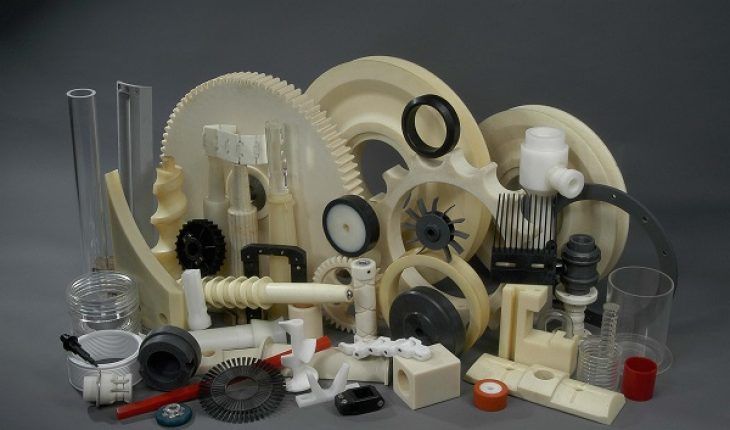Plastics have become an integral part of our daily lives. From smartphones to automobiles, plastics play a vital role in manufacturing a wide variety of products. However, not all plastics are created equal. While commodity plastics like polyethylene (PE) and polyvinyl chloride (PVC) dominate consumer applications, a special class of high-performance plastics called “engineering plastics” are increasingly being used for advanced applications that require superior mechanical, thermal and chemical resistance properties. In this article, we explore the world of engineering plastics and how they are paving the way for innovation.
What are Engineering Plastics?
A sub-set of plastics that exhibit superior mechanical and physical properties compared to commodity plastics are known as engineering plastics. They are specially engineered through advanced polymer chemistries to deliver optimized functionality and performance under demanding conditions. Some key properties that distinguish engineering plastics include:
– Higher tensile strength and stiffness: Engineering Plastics are formulated to be significantly stronger and stiffer compared to commodity plastics. They can withstand high tensile and impact loads.
– Enhanced temperature resistance: Most engineering plastics have a higher heat deflection temperature (HDT), which is the temperature at which a plastic deforms under a specific load. They retain their properties over a wider temperature range.
– Superior chemical resistance: The chemical structures of engineering plastics make them more resistant to corrosion and degradation caused by exposure to chemicals, fuels, solvents, acids and alkalis.
– Machinability: While rigid and tough, engineering plastics can also be easily machined, molded, glued, cast or welded for fabrication – an advantage over metals.
– Electrical and thermal insulation: Many engineering plastics are excellent electrical and thermal insulators, making them useful for electrical and electronic applications.
Popular Types of Engineering Plastics
With their versatility across industries, a wide variety of engineering plastics have been developed. Here are some of the most common types used today:
Polyamide (PA) or Nylon: Known for its strength, rigidity and dimensional stability. Used in automotive, industrial and consumer applications that require high strength and abrasion resistance.
Acrylonitrile butadiene styrene (ABS): An economical plastic possessing good impact strength. Common in housings for appliances, power tools, and electronic goods.
Polycarbonate (PC): An engineered plastic with excellent impact resistance and transparency. Used in safety equipment, medical devices and automotive/aircraft transparencies.
Polybutylene terephthalate (PBT): Durable with low moisture absorption. Found in connectors, switches, lamp sockets and electrical/electronic parts.
Polyether ether ketone (PEEK): A semi-crystalline thermoplastic with very high strength-to-weight ratio. In demand for aerospace, medical and automotive components.
Fluoropolymers: Exceptional chemical resistance and exceptional dielectric properties. Preferred for semiconductor fabrication, oil & gas, pharmaceutical and chemical equipment applications.
Applications in Key Industries
Owing to their versatility, engineering plastics have emerged as the perfect substitutes to metals in variety of industrial applications. Some key areas where they are making a major impact include:
Automotive: From exterior body panels, instrument panels and connectors to powertrain components – engineering plastics help automakers develop lighter yet stronger vehicles with improved fuel efficiency. Today, plastics account for 10-15% of a modern vehicle’s weight.
Electrical & Electronics: Electrical insulators, housings, connectors and wire casings are commonly injection molded using engineering plastics like PBT, PEEK and liquid crystal polymers (LCP) for their heat resistance and dielectric properties.
Industrial Equipment: Chemical equipment, oil & gas fittings and valves extensively use fluoropolymers and high-performance PA, PC and PTFE resin for their non-reactive nature. Other sectors like semiconductor fabrication and life sciences also depend on engineering plastics.
Aerospace: Aircraft manufacturers benefit immensely from lightweight engineering plastics like PEEK and PEKK which have strength-to-weight ratios comparable to aluminum. They are popular choices for structural interior components and fasteners.
Medical Devices: Rigid yet ductile thermoplastics have revolutionized the production of medical devices and implants by allowing miniaturization and complex interior geometries. PA and PC are popular design choices.
As technology advancements raise performance expectations across industries, engineering plastics will play an increasingly vital role. Research in high-heat thermoplastics, bio-based and recyclable polymers indicate an exciting future ahead. Additive manufacturing techniques are also opening up new design possibilities. Sustainability initiatives may see more “design for recycling” approaches adopted. From developing countries to core sectors like renewable energy – engineering plastics surely have a lot more ground to cover. Their unique blend of properties makes them materials of choice for innovation – driving advances in various domains well into the future.
*Note:
1. Source: Coherent Market Insights, Public sources, Desk research
2. We have leveraged AI tools to mine information and compile it



